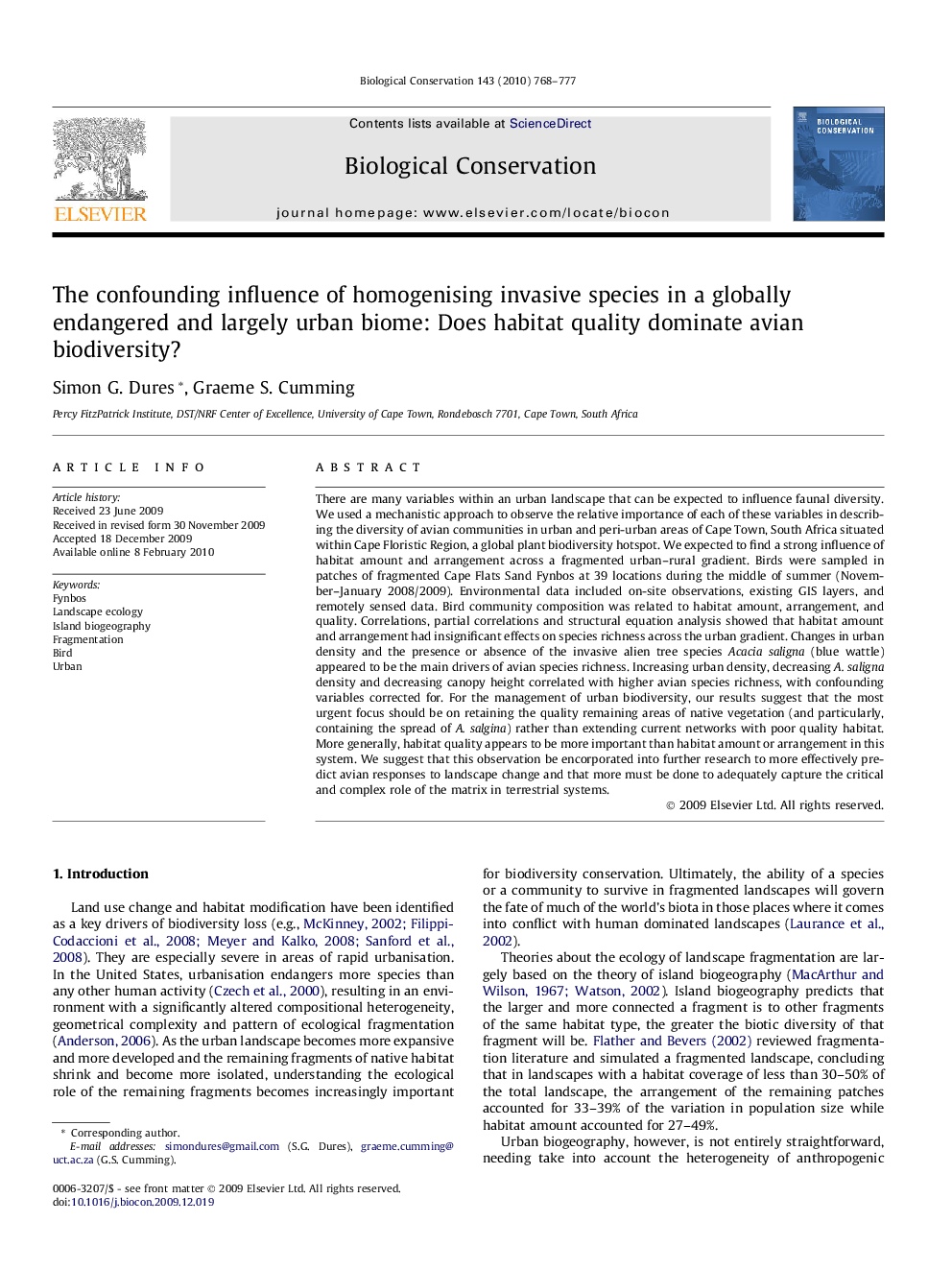| Article ID | Journal | Published Year | Pages | File Type |
|---|---|---|---|---|
| 4386126 | Biological Conservation | 2010 | 10 Pages |
There are many variables within an urban landscape that can be expected to influence faunal diversity. We used a mechanistic approach to observe the relative importance of each of these variables in describing the diversity of avian communities in urban and peri-urban areas of Cape Town, South Africa situated within Cape Floristic Region, a global plant biodiversity hotspot. We expected to find a strong influence of habitat amount and arrangement across a fragmented urban–rural gradient. Birds were sampled in patches of fragmented Cape Flats Sand Fynbos at 39 locations during the middle of summer (November–January 2008/2009). Environmental data included on-site observations, existing GIS layers, and remotely sensed data. Bird community composition was related to habitat amount, arrangement, and quality. Correlations, partial correlations and structural equation analysis showed that habitat amount and arrangement had insignificant effects on species richness across the urban gradient. Changes in urban density and the presence or absence of the invasive alien tree species Acacia saligna (blue wattle) appeared to be the main drivers of avian species richness. Increasing urban density, decreasing A. saligna density and decreasing canopy height correlated with higher avian species richness, with confounding variables corrected for. For the management of urban biodiversity, our results suggest that the most urgent focus should be on retaining the quality remaining areas of native vegetation (and particularly, containing the spread of A. salgina) rather than extending current networks with poor quality habitat. More generally, habitat quality appears to be more important than habitat amount or arrangement in this system. We suggest that this observation be encorporated into further research to more effectively predict avian responses to landscape change and that more must be done to adequately capture the critical and complex role of the matrix in terrestrial systems.
